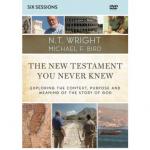On Christian Teaching: practicing faith in the classroom
Grand Rapids: Eerdmans, 2018.
Available at Amazon.com
What does it mean to teach ‘Christianly’ (other than perhaps avoiding the use of words like ‘Christianly’)? In On Christian Teaching David Smith answers this question. His interest is not simply in teaching Christian content, or in teaching within a Christian ethos. Instead, Smith argues for an approach to teaching and learning, the pedagogical process itself, that is explicitly shaped by Christian faith.
Smith’s argument is not a simplistic quest for a uniquely Christian approach to teaching, nor for a biblical imprimatur for classroom practices. This is not a book that tells Science teachers how to craft a lesson on intelligent design, or Maths teachers to design learning activities for students to calculate a tithe on after-tax income. Smith argues for an approach to teaching and learning that “can be meaningfully ‘motivated’ by Christian faith” (p.63). Rather than looking for divine command, Smith outlines a way of thinking about education that looks for “fit”, for pedagogical practices that are “sensible extensions of being Christian” (p.64).
The book comes in two halves. Chapters 1 through 5 make the case that faith can shape pedagogy. Chapters 6 through 10 build on that theoretical (and theological) foundation to detail how classroom teachers can approach the practical task of teaching and learning design.
This is a book squarely aimed at actual classroom teachers. Smith is himself a teacher, formerly as a High School teacher of German, French, and Russian, and currently at Calvin College Michigan, as Director of Graduate Studies in Education, and the Kuyers Institute for Christian Teaching and Learning. The text is littered with examples from actual classroom experience, both as passing references, and in extended analysis. Moreover, the text itself is an example of Smith’s pedagogical practice. Smith quotes an extract on a theology of sin as self-love three times at various points of his argument. In this Smith is not only arguing for the value of reflective reading as a teaching practice, he invites his readers to actually engage in the practice for themselves. Consistent with his emphasis on personal integrity and community formation, each chapter concludes with questions for group discussion, together with reflective activities and journaling prompts.
The case for a faith-formed pedagogy owes much to the Christian Practices paradigm in practical theology, drawing in particular on the work of people like Craig Dykstra, Dorothy Bass, Alasdair Macintyre, and Etienne Wenger. Smith does not suggest that a faith-formed pedagogy will be uniquely Christian (“practices have a way of not staying distinctive if they are helpful”, p.129). Rather than aiming for uniqueness, Smith is arguing for “integrity” where our classroom practices are a faithful embodiment of Christian beliefs. One of the most arresting images in the book is that of pedagogy as “a home in which teachers and students can live together for a while, a place to which students are welcomed as guests and in which they can grow” (p.12).
The practical proposal for teaching and learning design presents the ‘What-If Learning’ approach, developed by an international team of Christian educators (http://www.whatiflearning.com/). After an initial overview (chapter 6), a chapter apiece is given to each facet of the model: seeing anew, choosing engagement, and reshaping practice. Rather than suggesting one prescribed technique, What-if learning offers a “process of faith-informed reflection on how we teach” (p.129).
As I read this book I found myself thinking of all kinds of ways I could reimagine and reshape my own teaching. My summary notes on Smith’s argument are interrupted in various places with ideas to implement in particular classes.
This is a book that will inspire Christian teachers to recognise the theological and faith-forming power their classroom interactions hold. For those who have the privilege of teaching, whether in primary, secondary, or tertiary education, whether in explicitly Christian settings or in secular institutions, On Christian Teaching is a wonderful gift of insight, challenge, and practical help.
Graham Stanton
Ridley Centre for Children’s and Youth Ministry













